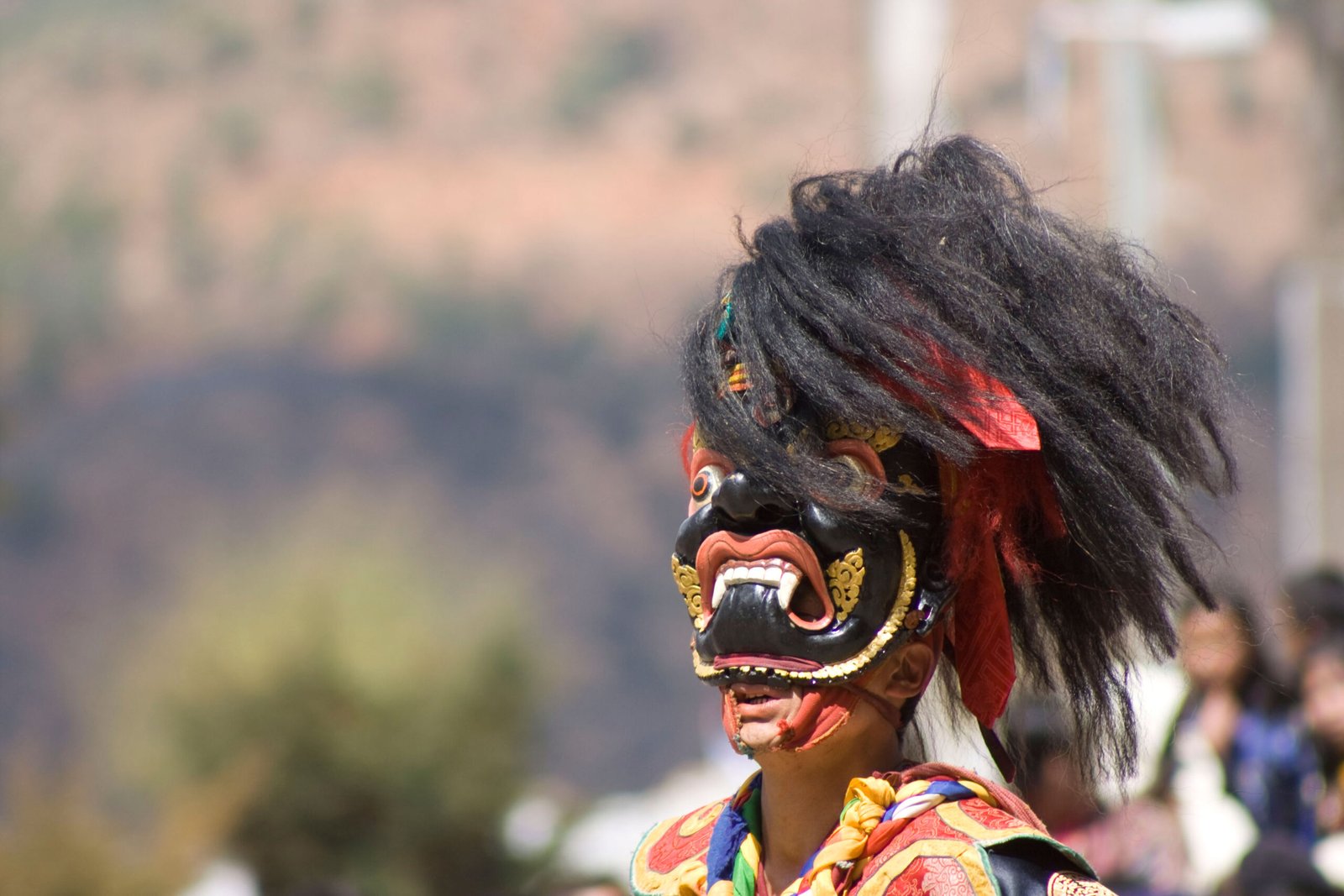
Thimphu Tshechu

The Thimphu Tshechu is a major festival in Bhutan’s capital city. It lasts for three days in the 8th lunar month and celebrates the birth of Guru Rinpoche, the founder of Tibetan Buddhism. The festival was started by Tenzing Rabgye, the 4th ruler of Bhutan, in 1670.
It takes place in the Tashichhodzong, a fortress and monastery that serves as the seat of government and religion. Thousands of people from different regions come to watch the festival, which is a religious and social event. By attending the festival, people believe they can earn merit and blessings. They also enjoy the colorful and lively performances of masked dances and comedy skits.
The dances are based on the Tantric teachings and invoke the power of the deities to dispel evil and bring peace and happiness. The festival has evolved over time, with the addition of more dances by lay monks in the 1950s, under the patronage of the third King Jigme Dorji Wangchuck. Some of the dances are similar to stage plays and depict the eight forms of Guru Rinpoche or the story of a hunter and a stag. The Atsaras, or clowns, are also an important part of the festival. They are not just entertainers, but also protectors and teachers. They use humor and satire to mock evil forces and convey social messages.
The festival is also a break from the hard work of farming. It is a time to celebrate, pray and wish for health and happiness.
Details
- Start: September 21, 2026
- End: September 23, 2026
- Event Categories: Buddhist Festival, Cultural
Venue
- Trashichhoedzong
- Thimphu, Bhutan + Google Map
